ST. JOHN: DEAN of FANTASY ILLUSTRATORS
by Darrell C. Richardson
Reprint
For a number of years I have had a great admiration for the
art work of J. Allen St. John. I was introduced to his work thru his magnificent
illustrations in the "Tarzan" and "Martian" books of Edgar Rice Burroughs.
Later I began to collect books and magazines that contained his illustrations.
More recently, I have been collecting original paintings and illustrations
of his.
Last summer I had the privilege of meeting Mr. St. John
and having a long visit with him in his own studio in Chicago. My younger
brother is a student at the American Academy of Art where St. John is a
professor. I decided to drive up to Chicago for a week of book and magazine
searching combined with a visit to my brother. Plans had already been made
for me to meet St. John.
My first visit to the Field Museum, the Railroad Fair,
Shasta Publishers, Ziff-Davis (the home of AMAZING STORIES and FANTASTIC
ADVENTURES) and many other points of interest made my trip worthwhile.
In addition, my search among the book stores and back-issue magazine stores
proved highly rewarding. However, all of this is another story. The real
highlight of my trip was my visit with St. John.
Arrangements were made to meet Mr. St. John at the Art
Academy. Entering the main office of the school, the first object of my
attention was a huge painting of Tarzan and Jad-Bal-Ja hanging above the
door. It was immediately recognized as St. John's original for the book
jacket of "Tarzan and the Golden Lion".
Frank H. Young, President and founder of the famous American
Academy of Art was introduced to me by my brother Haskell. He, in turn,
took us back to St. John's room where he was teaching one of his classes
in "life" figure drawing. Mr. Young introduced me to Mr. St. John, a very
tall and elderly gentleman, with a quiet and friendly voice. He immediately
suggested that we walk into the next room for a chat. I noticed a familiar
drawing on the wall of his classroom. It was one of the original illustrations
for the book, "Tarzan the Terrible", showing Mo-Sar, the tailed man of
Pal-ul-don, carrying Jane (Tarzan's mate) away as she struggled and fought
fiercely. Mr. St. John explained that he kept it framed in his classroom
because it was one of the finest examples of a "wash-drawing" that he had
ever done.
Mr. Young, before he left us, commented briefly on the
worth of Mr. St. John as an instructor and how much he meant to the Academy.
He also praised his illustrating skill and stated that he was a very fine
artist. Anyone in the field of Commercial Art will realize that this praise
meant something coming from a man like Frank H. Young. Mr. Young is author
of three of the best-known textbooks in advertising art --- namely, "Advertising
Layout", "Modern Advertising Art" and "Technique of Advertising Layout"
and has achieved international recognition as an authority in the field
of commercial art.
I mentioned many specific St. John illustrations that
appealed to me and also mentioned by date various cover illustrations from
BLUE BOOK, WEIRD TALES, AMAZING STORIES and other publications that were
special favorites of mine. Mr. St. John not only seemed amazed at our knowledge
of his work but was sincerely astounded that anyone had such an interest
in his art. I assured him that he has hundreds of fans who admired his
work immensely. Especially is this true of Burroughs' fans who consider
that Burroughs' tales and St. John's pictures go together like ham and
eggs. Mr. St. John seemed totally unaware of organized fandom, closely
knit together by their interest in fantasy. In parting, Mr. St. John expressed
much "appreciation of our appreciation" and invited us to visit him in
his studio the next afternoon.
The following afternoon we arrived at Mr. St. John's address
on Ontario Street and were shown into his studio, where he also lives.
The atmosphere of the studio, the massive easel, railed balcony, the heterogeneous
mixture of drawings, paintings and objects of art here and there, seemed
in every way to be appropriate to our expectations. Indeed, the furnishings,
the huge sky-light, the paintings of European and African scenes on the
walls provided an ideal setting for the famed artist.
Knowing of our interest in Burroughs, Mr. St. John had
set out a stack of his own personal collection of Burroughs illustrations
to show us. They were stacked one against the other faced against the wall
and we could only see one at a time. The very first one happened to be
the frontispiece for "At the Earth's Core" -- the one which is titled:
"The awful thing behind me was gaining rapidly." Then one by one St. John
would take a picture from the stack and place it on the easel where we
could view it in comfort. Once or twice he seemed to forget just what story
a particular painting illustrated -- but old Burroughs fan that I am, I
was able to identify each one on the instant! You can imagine the thrill
of expectancy with which we awaited the removal, one by one, of the various
paintings. My breath was almost taken away by the enormous size of the
drawings and by the flawless technique and vivid imagination they demonstrated.
I could write pages just describing these various paintings and the many
little human interest stories connected with several of them.
For example, soon after he had shown us the cover painting
in color for the book jacket of "Pellucidar", he pulled out what I took
to be the same painting, done not in colors, but in black and white. He
placed them side by side and then small differences were noted. It seems
that when the Editor at McClurg's saw the interior illustration of Dian
the Cave Girl facing the Saber-tooth tiger, he was so impressed that he
asked St. John to paint the same scene in colors for the book jacket.
It was interesting to observe that St. John himself owned
the first illustration he had ever done of John Carter of Mars, namely
-- the painting on the jacket of "The Warlord of Mars" (another artist,
Frank E. Schoonover, had illustrated the first two Martian titles). Painted
in oils on canvas, still on its original stretchers, it was nearly four
feet high. He remarked that many years ago it had been exhibited in a public
display, and for this event he had painted out the lettering. It might
be mentioned at this point that St. John invariably did his own lettering
and furthermore, painted the lettering right on the painting. The A. C.
McClurg Publishing Company liked his lettering so much that they insisted
that he do his own lettering. St. John has a most unique style of lettering
which is all his own.
The largest of all the paintings I saw was the one for
the book jacket of "At the Earth's Core". This one was a beauty. St. John
said, "This represents my very best work." He counts it the most valuable
of his Burroughs illustrations.
A number of the interior illustrations from "Tarzan the
Terrible" and "The Chessmen of Mars" have been retained by the artist.
It might be mentioned here that many of the original McClurg editions of
Burroughs' books contain several St. John pictures that were never reprinted
in subsequent editions. Having a complete set of Burroughs first editions,
I was able to recognize many of these illustrations that never reappeared
in the reprints. Thus some of St. John's finest work has been seen by comparatively
few people. For example, the first editions of several titles such as "Thuvia,
Maid of Mars", "The Chessmen of Mars", "Tarzan and the Jewels of Opar",
"Tarzan the Untamed", "Tarzan the Terrible", "Tarzan and the Golden Lion",
"At the Earth's Core" and others contain as many as ten full page St. John
illustrations. Usually only three or four of these appeared in the reprint
editions.
My brother Haskell admired greatly an original from "Tarzan
the Terrible" showing Korak, the son of Tarzan battling the huge prehistoric
reptile in the waters of the swamp which bordered the land of Pal-ul-don.
St. John replied, "That was one of the more difficult illustrations....showing
the figure under water with a portion of the reptile above and a part below
the water-line, and without the use of color, presented difficulties. I
like this picture about as well as any I ever did."
Many of St. John's illustrations for the Tarzan and Martian
stories were painted in heavy oils on board, without the use of colors
other than whites, blacks and shades of gray.
In reply to the question, "What is in your opinion the
best illustration for a Burroughs tale?" St. John pointed out the one in
"Tarzan the Untamed" where Tarzan, after nearly dying of hunger and thirst
on the desert, feigns death and when Ska the Vulture swoops down, he quickly
comes to life and stretches forth his mighty arm to grasp the great bird.
I asked Mr. St. John just how he went about illustrating a story. He replied,
"Well, I first read the story for enjoyment just as you would. Then I read
it a second time and jot down ideas about various scenes that appeal to
me for illustrating purposes. I then try to illustrate the story accurately
according to the author's description." Would that more artists today would
follow this simple but wise plan!
Mr. St. John considers Edgar Rice Burroughs a good friend
-- but related that since Burroughs moved to California their paths had
not crossed frequently. Burroughs always felt that St. John was a very
happy choice to be the illustrator of his stories. He once told St. John
that he felt his illustrations were responsible for half the sale of his
books. Mr. Burroughs once said, "I consider J. Allen St. John one of the
greatest illustrators in the United States."
After we had viewed the Burroughs illustrations, Mr. St.
John spent nearly two hours showing us many other paintings which included
scenes painted while in Holland, Belgium, North Africa, and other foreign
places. He remarked that he had been "over the waters" six times. Much
of his work was stored away and he had not seen some of it for years. He
thought he had "some more Burroughs illustrations around but wasn't sure".
While rummaging thru a closet he turned up quite a pile of cover paintings
from western books by George W. Ogden, W. R. Raine, Charles A. Seltzer
and others. Just before we left he showed us a portfolio of his work which
included sample illustrations from many books and magazines.
As Haskell and I turned to go out the door, he called
us back to show us a painting he had just completed. It was a woodland
scene, showing a shaggy satyr kneeling before an ancient stone statue of
Pan with a beautiful nude maiden astride his shoulders. The delicate coloring,
the almost eerie beauty of the sylvan glade, along with the mythological
subject itself, make the painting one of the finest pieces of fantasy art
that I have ever seen. He had titled it "Ave Pan", and had done it in casein
rather than oils, a medium that has intrigued him in recent years.
I shall always look back to my visit with this great fantasy
artist with a great deal of genuine pleasure. Cultured and reserved, with
a thoughtful and modest manner, Mr. St. John impressed me as a friendly
and courteous gentleman of the old school.
J. ALLEN ST. JOHN is at the present time Professor of
Life Drawing and Illustration at the American Academy of Art. For nearly
twenty years he was an instructor at the Chicago Art Institute. In his
younger days he studied at Art Students' League in New York under William
M. Chase, Carol Beckwith, Kenyon Cox and others. In Paris he studied with
Jean Paul Laurens and in Belgium and Holland with Henri Vierin. He has
served as illustrator and designer for the NEW YORK HERALD, CHICAGO RECORD-HERALD,
CHICAGO TRIBUNE, American Colortype Co., A. C. McClurg Publishing Co.,
Metropolitan Books, Inc., and the Edgar Rice Burroughs Publishing Co. He
has also illustrated for such publications as HARPER'S BAZAAR, DELINEATOR,
RED BOOK, BLUE BOOK, GREEN BOOK, YOUTH'S COMPANION, BOY'S WORLD, WEIRD
TALES, ORIENTAL STORIES, MAGIC CARPET, AMAZING STORIES, FANTASTIC ADVENTURES
and others. He has illustrated many books, the most recent being "The Life
of Sir Arthur Conan Doyle" by John Dickinson Carr.
His paintings have been exhibited in the Paris Salon,
National Academy in New York, Pennsylvania Academy, Chicago Art Institute
and other places. He is represented in many private and public collections.
He has always maintained his private studio and during most of his lifetime
has been located on Ontario Street in Chicago.


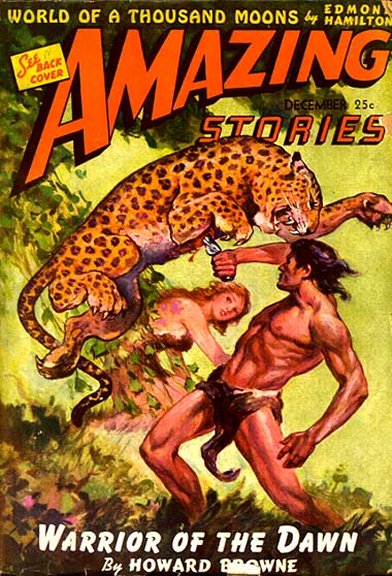
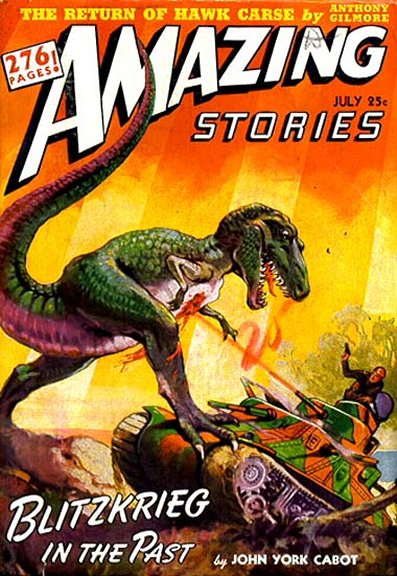
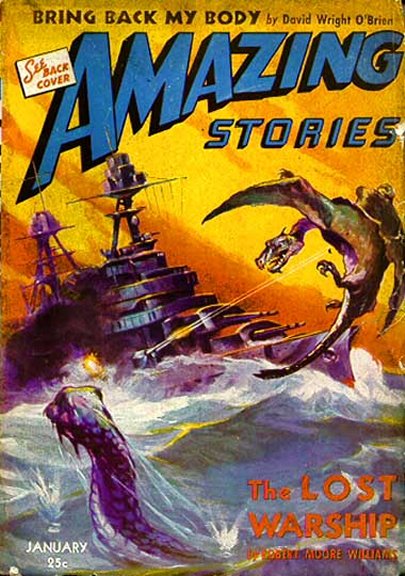
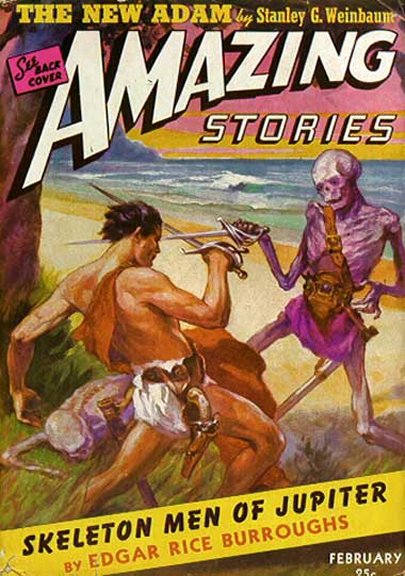
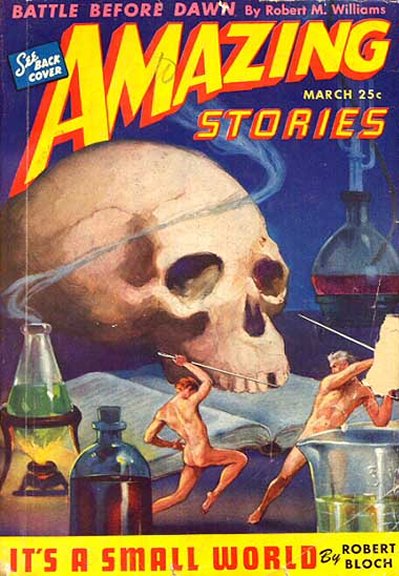
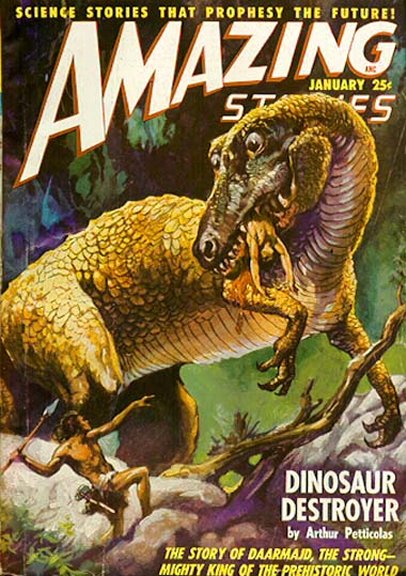
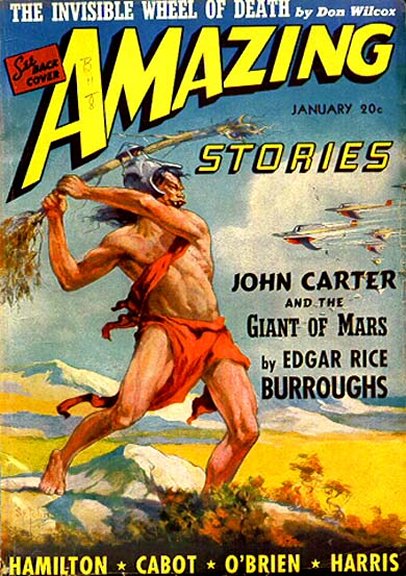
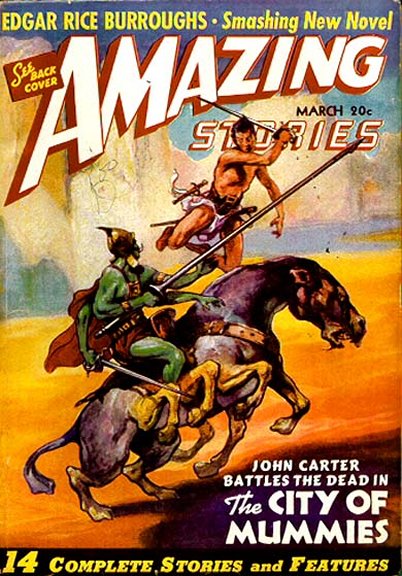
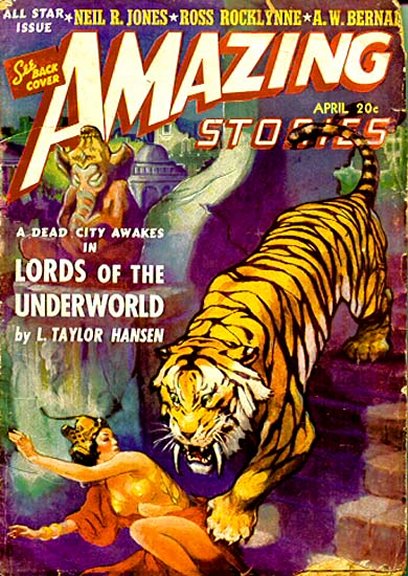
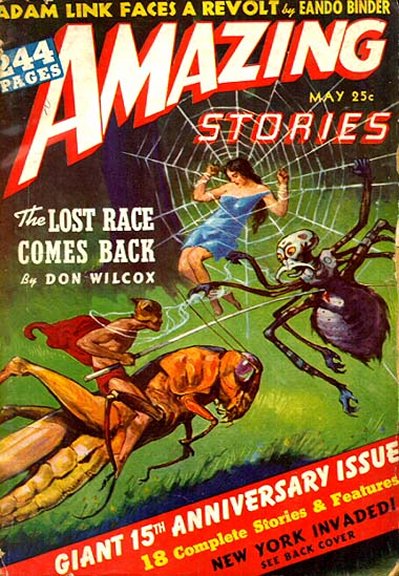
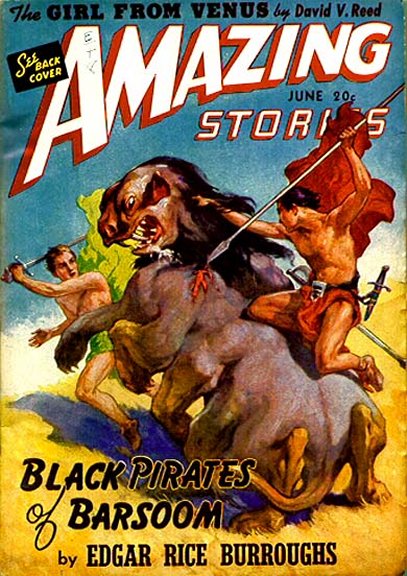
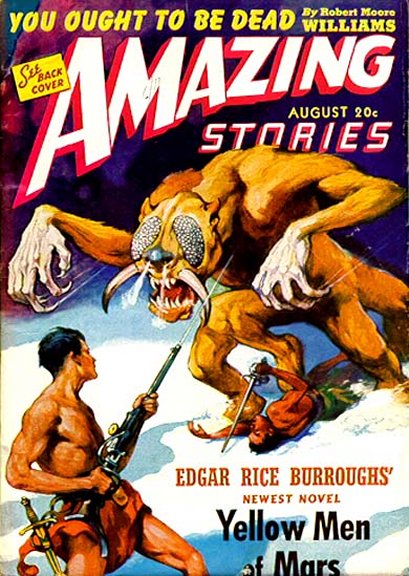
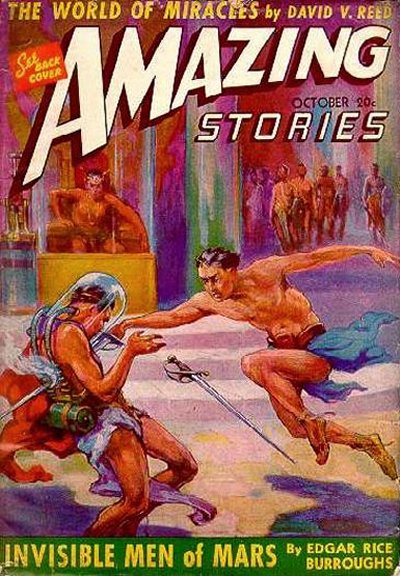

![]()

![]()
![]()